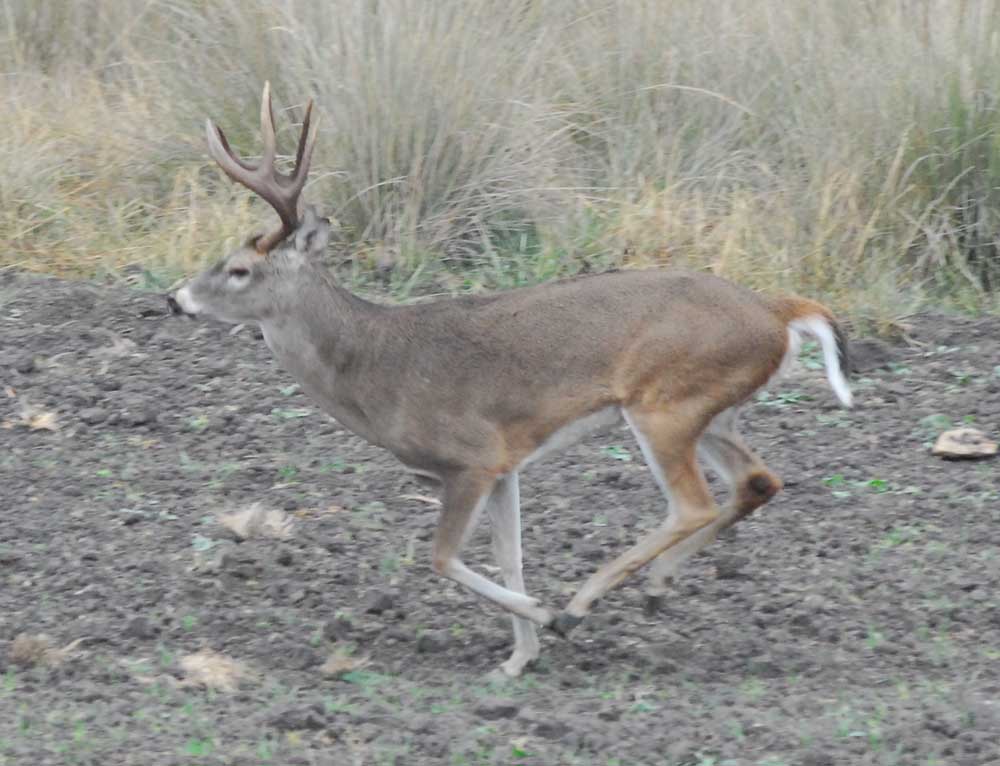Looking Ahead: Hunters should start now to help deer for next season
Published 11:00 pm Friday, January 12, 2024

- The rut can be difficult on bucks so helping them get through the post-run winter stress period will help setup a better season next fall.
To quote Willie Nelson, a great Texan if maybe not a hunter, turn out the lights, the party’s over.
Deer hunters across the Lone Star State are making their way out of the fields and back to the comfort and warmth of their fireplaces back home.
About the only thing left behind now are the deer themselves, ones that either slipped by, were left to age another year or just were not shot. Depending on where you are when it comes to herd management, it is a good idea to keep those deer in mind looking toward the 2024-25 season.
Just as the season winds down deer are entering a stress period that for many can be a life-or-death situation.
“January and February are the coldest months of the year, however, stress is not equal among bucks and does. Does are either already bred or may be entering estrus for a second or even third time, which is not a high-stress requirement. Bucks can become quite stressed during this time, especially as they try to regain weight lost during rutting activity,” explained Blaise Korzekwa, Texas Parks and Wildlife Department’s white-tailed deer program leader.
The biologist explained that for bucks the cold weather and reduced available forage in some years are hard on the animals coming out of the fall in a weakened state.
“It’s a combination of several factors. Bucks will lose around 20 percent of their weight during the rut due to an increase in daily movements and decrease in forage intake. As the breeding season winds down, a buck’s testosterone level begins to taper off and they begin the process of regaining lost weight. The lack of food, particularly during a cold, dry winter, can hinder their ability to regain weight and will prolong the amount of time bucks must rely on body reserves,” he said.
While hunters use it to their hunting advantage, three months of rutting activity can be hard on the deer. Korzekwa said post-rut mortality is the highest natural mortality factor in adult deer. In some cases, a buck may put so much effort into rutting activity that it will die of starvation if quality winter forage in not available. He said the bucks can also become more susceptible to infection and disease during the rut as they burn so much of their energy resources in chases. That weakened condition can also make the deer vulnerable to predation because they are unable to escape or fight.
In contrast doe usually come through the rut in better shape because they are not on the run for months on end.
“Hard winters can be stressful for any deer, but does still fair rather well. Fawns were weaned in late summer and early fall, so a doe’s nutritional demands are just a fraction of what they were during lactation. Their nutritional needs really begin to change in the spring and summer months, as they enter their second and third trimesters, and then spike during lactation,” Korzekwa said.
So what, if anything, can hunters do to help deer transition from one hunting season to the next. Rule No. 1 would be to make sure they maintain deer numbers to match carrying capacity. An overpopulated deer herd is not going to be as robust at any time, and in even more trouble during lean forage periods.
The only other thing to go along with managed numbers would be to consider supplemental feed. But it must be the right feed.
“Corn is simply used as an attractant and provides little nutritional value for deer. Depending how long hunters will continue to deer hunt during the first two months of the year, it’s recommended they allow the feeders to spin empty if they’ve put their rifle up for the season. Even if hunters continue to hunt through the end of the special late, youth, or Managed Lands Deer Permit seasons and still utilize corn feeders, the addition of supplemental feed or cottonseed is still recommended,” Korzekwa said.
By supplemental feed he is referring to protein pellets or the cottonseed that has become popular in recent years.
“You want to make sure you’re feeding a true supplement, such as pelleted protein feed or cottonseed. Don’t focus as much on the protein content during this time, but rather the crude fat content. Cottonseed is a great supplemental resource during this time due to its high crude fat content. Many of the ranches that have a supplemental feeding program will provide both pelleted protein feed and cottonseed,” Korzekwa said.
He said mid- to late-January is an ideal time to start feeding. It provides the fat at a time when natural nutritional value is at its lowest. However, it is not a cure-all. Post-rut mortality is still going to occur in poor nutrition years, and there could be other issues as well.
“As far as cons, one of the most common pitfalls that I see is when managers try to carry over a deer population that is way over carrying capacity by providing supplemental feed as necessary feed. Along with the resulting issues of being over carrying capacity, it tends to become financially problematic, and these landowners tend to increase harvest to lower deer densities back to desired levels.
“You can’t feed your way out of poor habitat practices and a deer population that’s over carrying capacity, but it’s one more management technique that is known to benefit deer populations on your land,” Korzekwa said.






